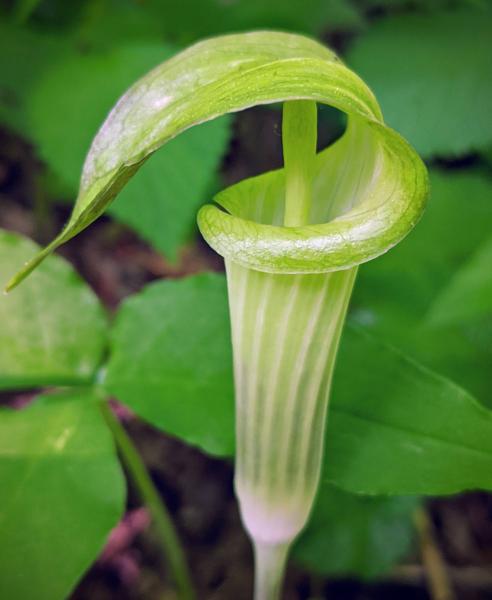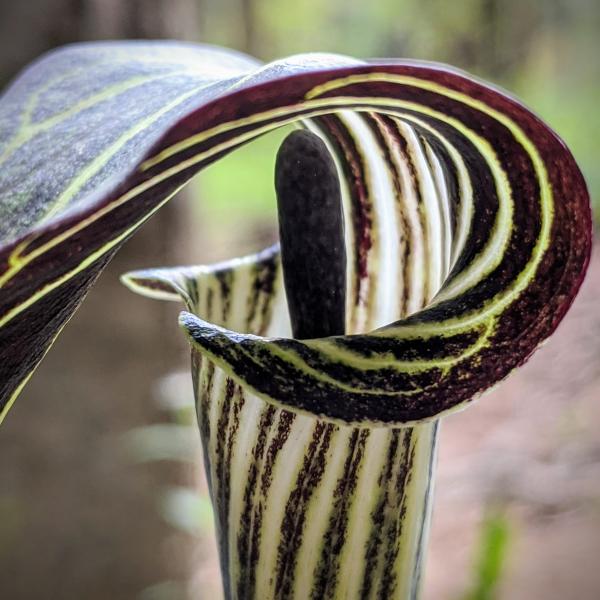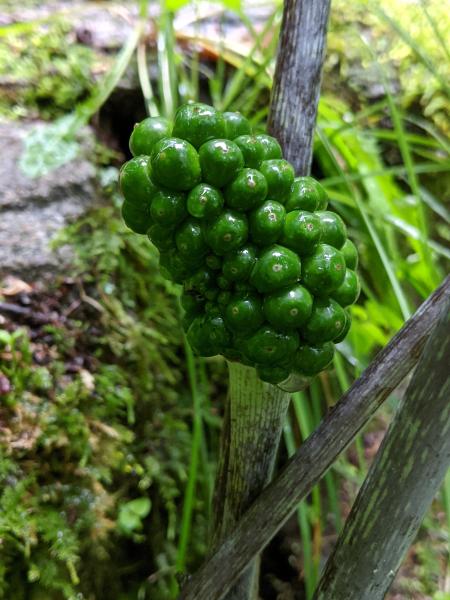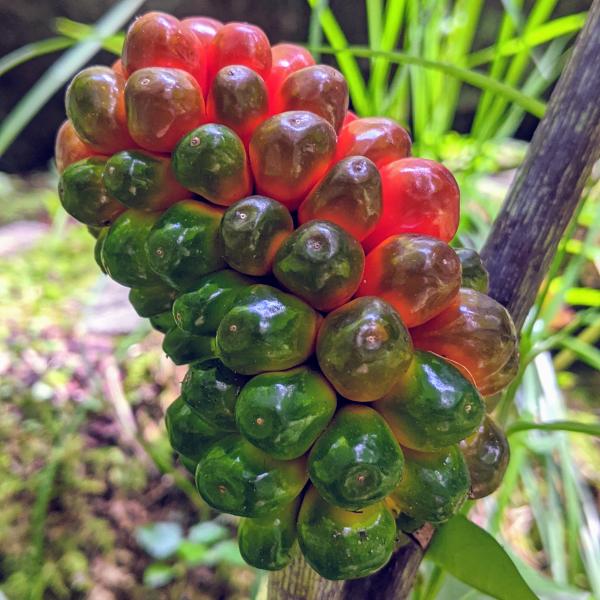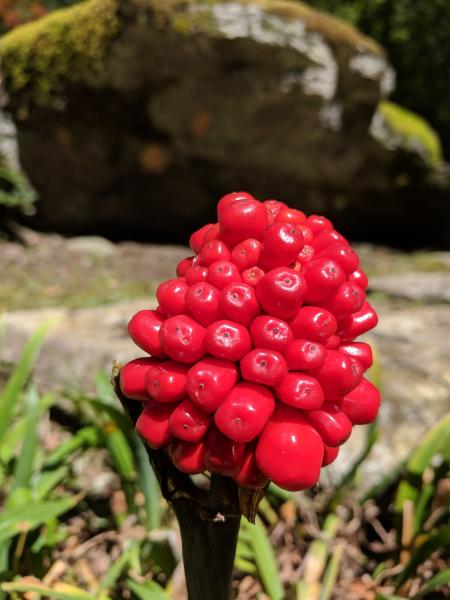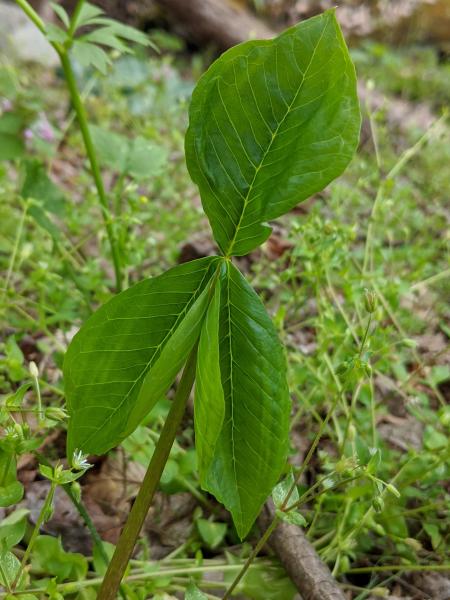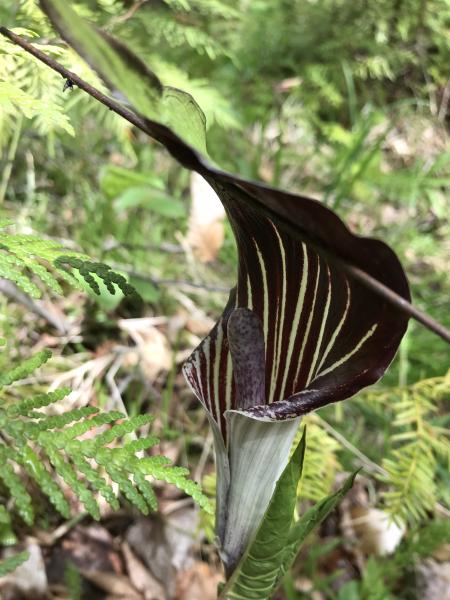
Names and Their Meanings
Jack-in-the-pulpit - Arisaema triphyllum
Jack-in-the-pulpit
Description
Jack in the Pulpit is a spring woodland wildflower that grows between one and two feet tall, and blooms in May and June. This unique plant begins with male flowers, which then become hermaphroditic as they age, with the male flowers on the upper part of the spadix (the “Jack”), and the female flowering parts on the lower spadix. The spadix is the flowering structure, containing numerous tiny flowers. The hermaphroditic flowering plants are the ones that produce green berries in mid-to-late summer, that ripen to become red as the spathe withers, forming a dense, egg-shaped cluster. Even more unique, the plant can change from male to female each year, becoming “Jill.”
Arisaema leaves are compound, with three deeply-lobed leaflets borne on long petioles that grow upward from a single stalk and provide horizontal, umbel-like shade for the flower. These lovely leaves have an outer vein that runs parallel to their margins. The root is round, resembling a small nut up to 2-3 inches, resembling a turnip or potato. Clusters of Arisaema are clonal, and can live remarkably long – up to twenty years or more. This plant’s name in Kanyen'kéha translates to “cradle board” or “little cradle board.” One morphological characteristic that can be used to distinguish a flowerless Arisaema leaf from a Trillium leaf is that Jack-in-the-pulpit leaves have a vein that is parallel to the outer edge of the leaf, and Trillium do not. This woodland plant requires partial to full shade, and thrives in medium to wet soils in rich, moist, deciduous, low woods, along creeks, and on floodplains. It needs constantly moist soil rich in organic matter, and does poorly in heavy clay soils.
Conservation Status
S5 (Secure) in Ontario; S1 (Critically Imperilled) in Manitoba, and no data for Québec, New England, or New York.
USES
In 1943, Fernald and Kinsey wrote about various people’s experiments of removing the “acridity” (presuming, the calcium oxalate) from the roots, to turn them into a starchy food, based upon reports from Indigenous peoples that Arisaema roots can be eaten as a starch and turned into flour. The methods for doing so include peeling the roots fresh, then grating or mashing them, and repeatedly washing them through a strainer - similar to processing cassava. It is also possible to roast the roots, powder them, and heat them again. The Fernald family cut the roots into very thin slices, dehydrated them, and ground them into a flour to make a bread or cake that they reported had a mild cocoa-like flavor. These uses of the root are behind the vernacular name “Indian turnip.” Fernald and Kinsey categorize Jack-in-the-pulpit’s use as “breadstuff.” Similarly, in 1925, Gladys Tantaquidgeon wrote that the “Indian turnip” dried root was steeped in water and used as a linament to allay pain. A tea from the same could be used as a gargle for sore throat. In 1926, Frances Densmore write that Arisaema was used by Anishinaabe as a medicine for sore eyes, but no specific preparation methodologies were provided.


